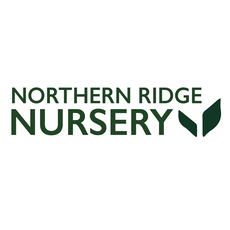What does bare root mean?
 Bare root trees are trees that are dug and stored without any soil around their roots. Trees can be bought "bare root," and then planted directly into the ground. While you’re likely familiar with potted plants, which are commonly seen at garden centers, bare-root trees and shrubs are becoming more available. You may have looked at those soil-free twigs with dried up roots and wondered, “How could this grow?” But once you know the advantages of bare-root trees and their easy care, you’ll realize you’ve opened up a whole new world of plant possibilities. We believe bare-root trees and shrubs are the wave of the future – especially when considering rising fuel costs. For newly developed neighborhoods, yards and cities, bare root is an economical way to grow more trees, saving up to 50% on plant costs. With their air filtering effects, water and energy conservation capabilities, trees are truly the power houses of being green.
Bare root trees are trees that are dug and stored without any soil around their roots. Trees can be bought "bare root," and then planted directly into the ground. While you’re likely familiar with potted plants, which are commonly seen at garden centers, bare-root trees and shrubs are becoming more available. You may have looked at those soil-free twigs with dried up roots and wondered, “How could this grow?” But once you know the advantages of bare-root trees and their easy care, you’ll realize you’ve opened up a whole new world of plant possibilities. We believe bare-root trees and shrubs are the wave of the future – especially when considering rising fuel costs. For newly developed neighborhoods, yards and cities, bare root is an economical way to grow more trees, saving up to 50% on plant costs. With their air filtering effects, water and energy conservation capabilities, trees are truly the power houses of being green.
What are the advantages of planting bare root trees?
-
More root mass. You can see the root system. When it comes to B&B and containerized trees, the roots are hidden below the soil, so you can’t tell if they’re twisted (girdled) around the trunk. With bare-root trees, the entire root system is exposed, so what you see is what you get. Bare root trees can have up to 200% more roots than B&B or container trees, depending on the soil and transplanting history at the nursery.
-
Lower cost. Without extra labor and materials, bare root trees cost less and are usually larger. It makes planting in large quantities easier on the pocketbook.
-
Easier planting. A young tree without soil weighs little, so it easy to move and plant.
-
Better planting. You can see the root flare (the area between the straight trunk and roots) on a bare-root tree, which is often hidden in trees sold in pots. Planting the root flare slightly above the ground grade provides the best positioning for your new tree. You’ll have control over that with a bare-root tree because you’ll see the flare. Burying the tree too deeply like many potted trees are can suffocate the root system and create a weaker tree- susceptible to damage later on.
-
Environmentally friendly. Less fuel spent on transporting extra soil and no need for plastic pots.
What are the best techniques to follow for bare root tree planting?
Use common planting techniques and reduce the time the tree roots are bare. Keep roots covered, shaded, and moist until actually put in the ground. We’ll supply you with easy to follow instructions. That’s all there is to it! Though they may appear weakly without a soil-bound root-ball, these plants really are robust and healthy – and easily established directly into your landscape. Once you get comfortable with bare-root plant material, you won’t miss lugging around that heavy root-ball! Whether you want your trees for their flowers, fruit or foliage, buying bare-root will get you a great value for your money. You’ll also save on some back-breaking work as you make your yard – and the world – a little greener.

